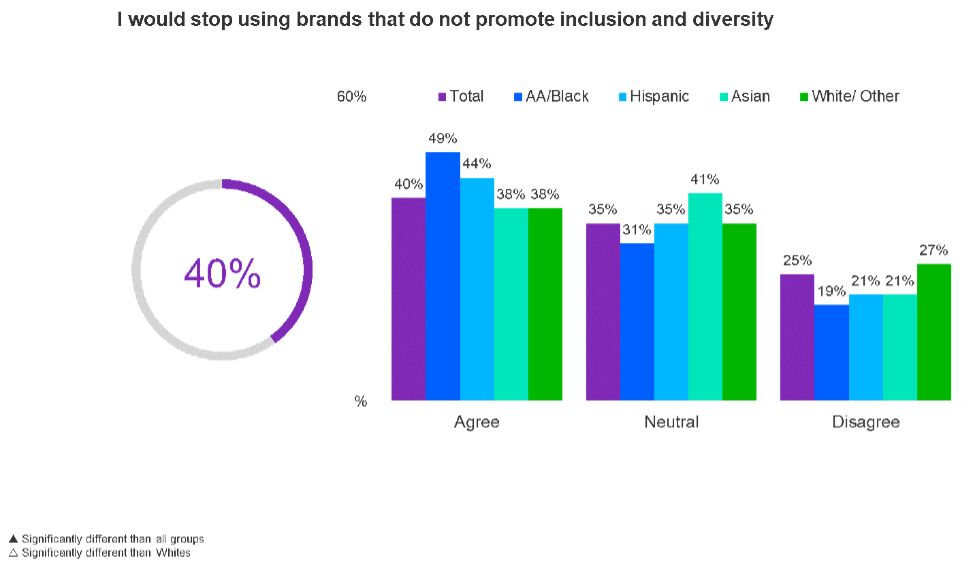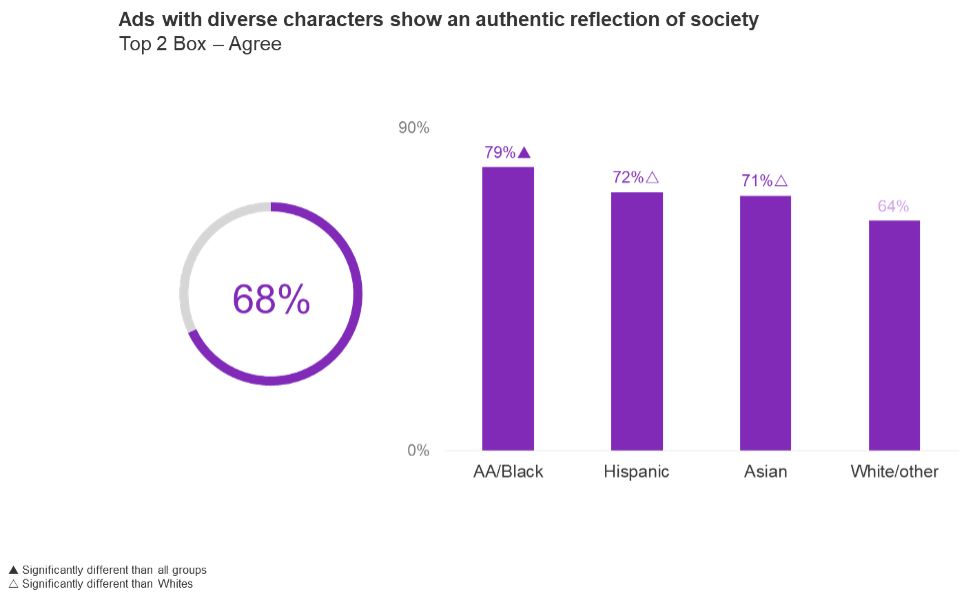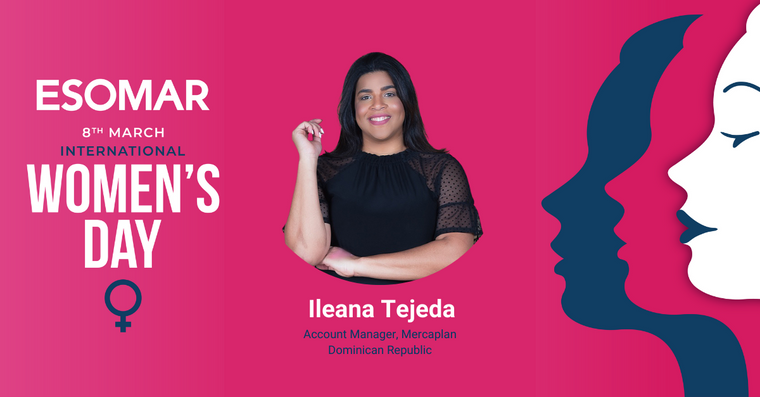How diversity in advertising can unlock brand growth
Getting diversity and inclusion right in advertising matters more than you think. Our research shows 52% of all consumers "trust a brand more if their ads reflect my culture." For brands, demonstrating inclusion and diversity in advertising is imperative.

Getting diversity and inclusion right in advertising matters more than you think. Our research shows 52% of all consumers “trust a brand more if their ads reflect my culture.” For brands, demonstrating inclusion and diversity in advertising is imperative.
Why is diversity and inclusion important?
Racial diversity in advertising is no longer simply a moral imperative, and it also makes business sense. But are brands doing enough?
Data shows that inclusion and racial diversity in advertising are proven to drive a return on investment. Our research shows that 40% of consumers “would stop using brands that do not promote inclusion and diversity.” Those percentages are higher among consumers identifying as Black Americans or Hispanics.

How diversity in advertising affects sales
It is clear from our databases that including underrepresented groups in ads on its own isn’t enough to drive sales.
Instead, the key to success is showing underrepresented groups in a positive way. When we look at ads that feature underrepresented groups in a positive way, there is a huge difference in the potential to influence short-term sales and build brands in the long term.

How to connect with consumers within diverse communities
To get to the bottom of what it is that helps drive positive impact when it comes to inclusion and diversity in advertising, we assessed the reasons for the success – and failure – of ads.
We leveraged five analytical tools: a copy-testing solution and neuroscience-based tools, emotional priming (implicit affinity), facial coding, eye tracking, and intuitive associations to uncover consumers’ implicit and explicit views on diversity in advertising. The study also looked at how to better understand the differences between single-race versus multi-racial and diverse ads by diverse audiences: Black Americans, Hispanics, Asians, and whites. Here’s what we found.
Consumers want more representation in advertising. 68% of consumers feel the need for more racial representation in advertising campaigns, believing that ads with diverse characters show an authentic reflection of society. This percentage jumps significantly higher among people of colour, who feel the need for higher representation.

True representation relates to how ‘seen’ diverse audiences feel and how relatable the stories we tell in our advertising are.
When we analyze the dynamics that define top-performing ads that are diverse and inclusive, we can identify three key features that make them stand out above the rest.
Three ways for advertisers to better connect with consumers within diverse communities
1. Inclusive casting
Truly inclusive advertising features central characters from underrepresented groups without the story typecasting or overly centring around their identity. Instead, identity is celebrated in ways that are authentic and appropriate.
As an example, Bounty paper towels created three ads targeting unique demography with the intention to be inclusive for each – one ad with an Asian family, another with a Black American family, and the third ad with a White family. Each ad was focused on a universal theme of family bonding playing on light humour.
Kantar analysis found all ads were seen as impactful (70+ percentile). At an implicit level, facial coding data showed that all ads had a moderate level of emotional engagement (55-70 percentile). The Asian and Black American family ads were considered “modern and progressive” for society (Diversity Index of 60-70), though that was not the case for the ad with the White family. The Asian and Black American ads were also spontaneously associated as ”inclusive” or “diverse.”
Another interesting finding was that Asians liked the ads with Asian families more than Whites, while Black Americans and Hispanics liked the Black American ad more than Whites. They all liked the positive portrayal of the cast and the family bonding shown among them. However, the White demography did not enjoy the ad with the White casting. The White audience could not relate to the theme and also commented on the negative portrayal of the cast.
The data suggests that people of colour find the ad inclusive when they show people of colour, regardless of the race being shown. Single-race ads or multi-racial ads have the power to drive impact across all races, provided the theme is relatable and authentic.
2. Celebrating culture
Accurately celebrating group cultures or shared cultural themes that connect organically to the brand or product being displayed is one way to use culture in positive representation. The key is to illustrate the brand message through a story centred around a culture that naturally connects.
Uber’s “15+1” ad is a great example of using the universal theme of birthday celebrations. The ad was colourful, features lively, culturally appropriate music, and portrays happy people who are age diverse and have accessibility needs using Uber and gathering to celebrate.
The ad performed well, with it being seen as progressive for society and those underrepresented (with an Index score of 74). It was also shown to be universally enjoyable across all demography. Moreover, spontaneous associations of the ad were all positive, and it was considered “inclusive” at an implicit level.
3. Focusing on what connects us
The third approach to better connect with diverse communities through representation in advertising is by focusing on the basic human truth that connects us. This involves showing multi-racial families or various demographics dealing with everyday issues that we can all connect to. This can be done by illustrating the brand message while showing the human experience through a diverse community.
A strong example of this is this campaign from Instacart. The ad features an interracial couple who are trying to get some rest while their baby is asleep, using Instacart to order their groceries. The ad was impactful (70+ percentile), emotionally engaging (80+ percentile), and the most enjoyable ad across all demographics, with the relatability of the couple’s situation being a key element of this enjoyment.
This example again shows the power of authentic and relatable storytelling: their race wasn’t the focus of the ad, it was their situation as new parents, something that transcends race.
Inclusion and racial diversity in advertising are not only morally the right option, but it is essential for modern brands to thrive.
Deepak Varma
Head of Neuroscience Insights, North America at KantarDeepak Varma is Head of Neuroscience Insights at Kantar – North America. Deepak has been working with Kantar for over 6 years to improve insight delivery from neuroscience tools, including client-specific training programs, especially focusing on Facial Coding. He has over 13 years of experience in neuroscience (using EEG, Facial Coding and eye tracking) in the area of advertising, packaging, brand equity, product development and shopper solutions globally.
Over the last 3 years, Deepak has done extensive research on inclusion and diversity in advertising with a focus on race, gender and LGBTQ+ audiences. He has papers in ESOMAR, and ARF and has done several client workshops on the topic and brings a unique perspective to DEI using neuroscience techniques and measuring implicit bias.


